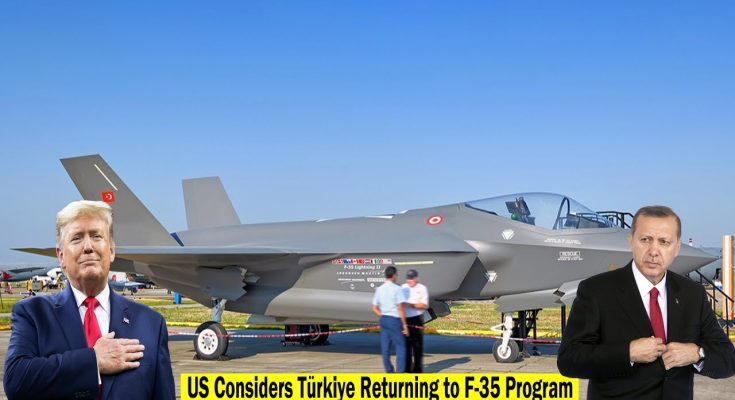US Congress Finally Reconsiders Türkiye in Stealth Fighter Jet Program
In a major development for Turkey’s defense industry, the U.S. Congress has reconsidered Turkey’s participation in the F-35 Stealth Fighter Jet Program, offering a pathway for the country’s re-entry into the coveted project. This shift marks a critical moment in U.S.-Turkey relations, which have been strained in recent years, and signals potential new opportunities for collaboration in military technology and defense partnerships.
Background of the F-35 Program
The F-35 Joint Strike Fighter Program is one of the most ambitious and expensive military projects in history. Developed by Lockheed Martin, the F-35 is a fifth-generation stealth fighter designed to perform a variety of roles, including air-to-air combat, ground attack, intelligence gathering, and close air support. With advanced stealth capabilities, superior sensor fusion, and cutting-edge avionics, the F-35 is regarded as one of the most advanced fighter jets in the world.
Turkey had been an integral part of the program, both as a partner nation and as a manufacturer of certain components. However, Turkey was removed from the program in 2019 after its purchase of the Russian-made S-400 air defense system, which was deemed incompatible with NATO systems. This decision was a significant blow to Turkey’s defense ambitions, as the country had already invested heavily in the F-35 program, both financially and through its participation in the manufacturing process.
Reconsidering Turkey’s Involvement
In 2024, U.S. lawmakers have moved to revisit Turkey’s exclusion from the F-35 program, following years of tensions and negotiations. A bipartisan initiative has emerged in Congress, pushing for Turkey’s reintegration into the program based on evolving geopolitical realities and the changing security landscape.
Several factors have contributed to this reconsideration. One of the primary drivers is Turkey’s strategic importance to NATO and its role as a key regional actor, particularly in the Middle East and the Eastern Mediterranean. The growing tensions with Russia, Turkey’s ongoing military operations in Syria, and its partnership with the U.S. in fighting terrorism have all highlighted the importance of maintaining strong ties with Turkey.
Additionally, the Turkish defense sector has made significant advancements in recent years, including the development of its own TFX KAAN stealth fighter, Bayraktar TB2 UAVs, and other indigenous defense systems. These developments have reinforced Turkey’s position as a self-sufficient military power and have prompted discussions on how the U.S. can benefit from continued collaboration with Turkey, particularly in the area of advanced fighter technology.
Strategic Importance for Turkey and the U.S.
Turkey’s reintegration into the F-35 program would have significant benefits for both countries. For Turkey, regaining access to the F-35 would ensure that its air force is equipped with one of the most advanced fighter jets in the world, complementing its growing fleet of advanced indigenous aircraft like the TFX KAAN. The F-35 would provide Turkey with unparalleled multirole capabilities, boosting its ability to conduct air-to-air combat, precision strikes, and reconnaissance missions.
For the U.S., re-involving Turkey in the F-35 program would strengthen NATO’s overall air combat capabilities. Turkey’s strategic location, bordering regions of high tension like Syria, Iraq, and the Russian-controlled Black Sea, makes it an essential partner in maintaining regional stability. The U.S. also stands to benefit from Turkey’s growing defense industry, which could facilitate deeper collaboration in areas like unmanned aerial vehicles (UAVs), missile defense systems, and counter-terrorism operations.
Challenges and Conditions
Despite the shift in sentiment in Congress, Turkey’s re-entry into the F-35 program is not without its challenges. The S-400 issue remains a sticking point, with some lawmakers arguing that Turkey’s purchase of the Russian air defense system poses a risk to the interoperability of NATO defense systems. In addition, the growing geopolitical rivalry between the U.S. and Russia makes it difficult to ignore the potential risks of Turkish engagement with Russian military technology.
However, both the U.S. and Turkey have expressed a desire to move forward with mutual cooperation, and discussions will likely center on finding a way to address the S-400 issue while reintegrating Turkey into the program. Diplomatic efforts, including assurances about the compatibility of Turkey’s defense systems with NATO’s network, will play a crucial role in shaping the future of this relationship.
Conclusion
The U.S. Congress’s reconsideration of Turkey’s participation in the F-35 program marks a pivotal moment in the evolving relationship between the two nations. As Turkey’s defense capabilities continue to grow, the prospect of collaborating on advanced fighter jets could open up new avenues for military cooperation, strengthening NATO and enhancing the security of both nations. While challenges remain, the renewed dialogue between Turkey and the U.S. represents a step toward rebuilding trust and reinforcing a strategic partnership that is crucial for regional and global security.



